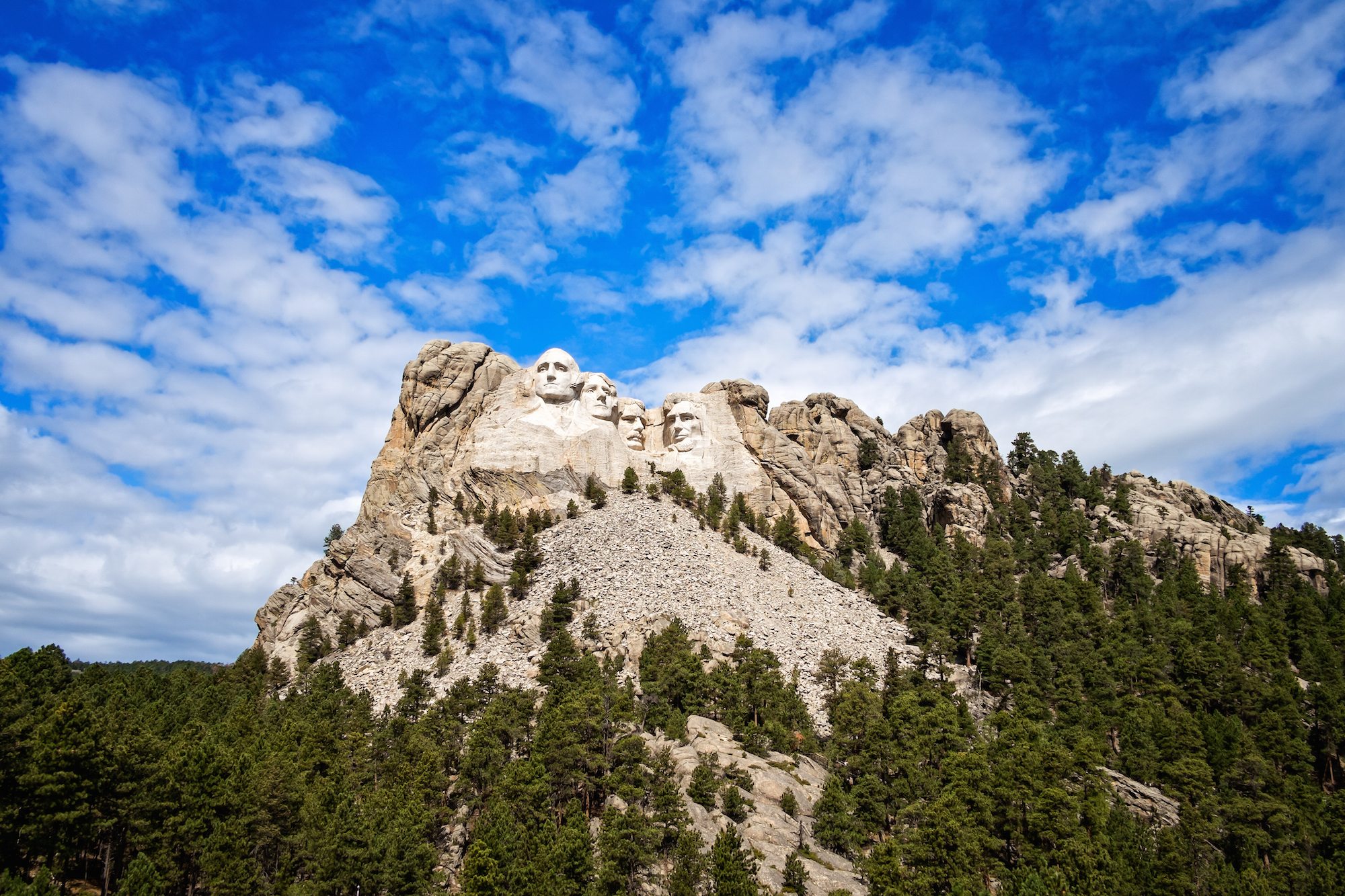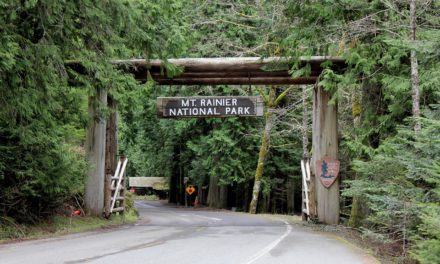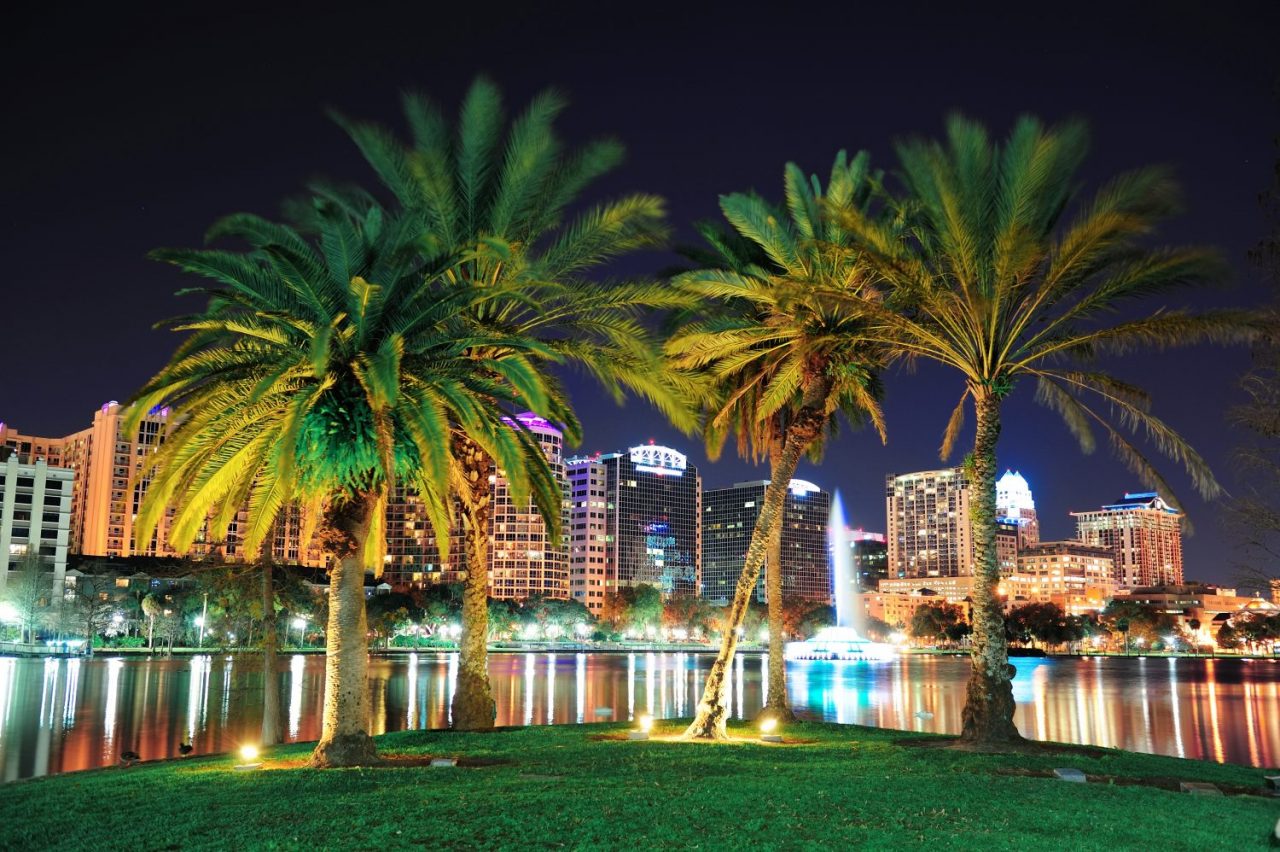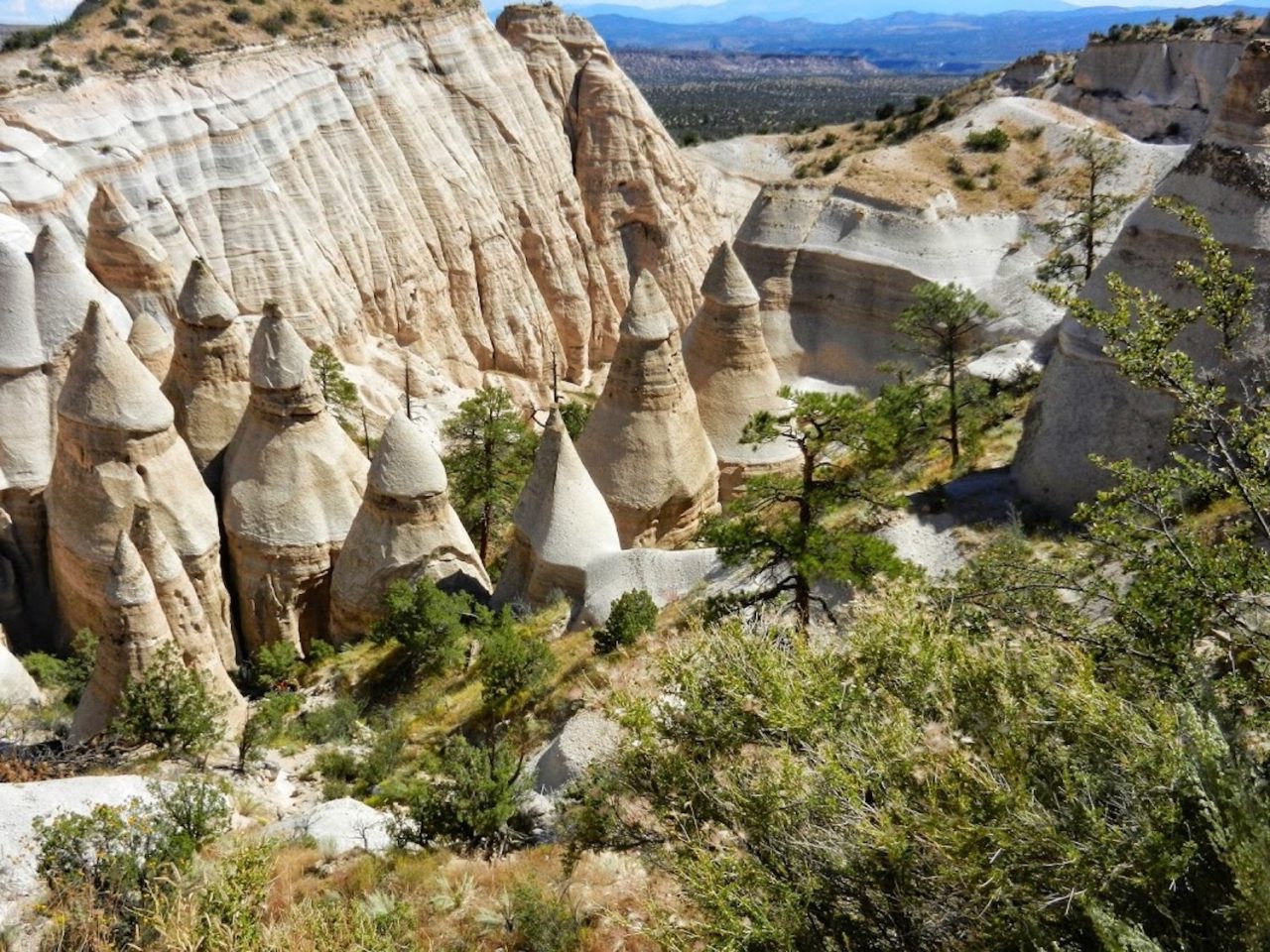Mount Rushmore is the jewel of the Black Hills region, but you have to see the many other features of its surrounding, sparkling setting to understand the winsome beauty of this gorgeous section of South Dakota.
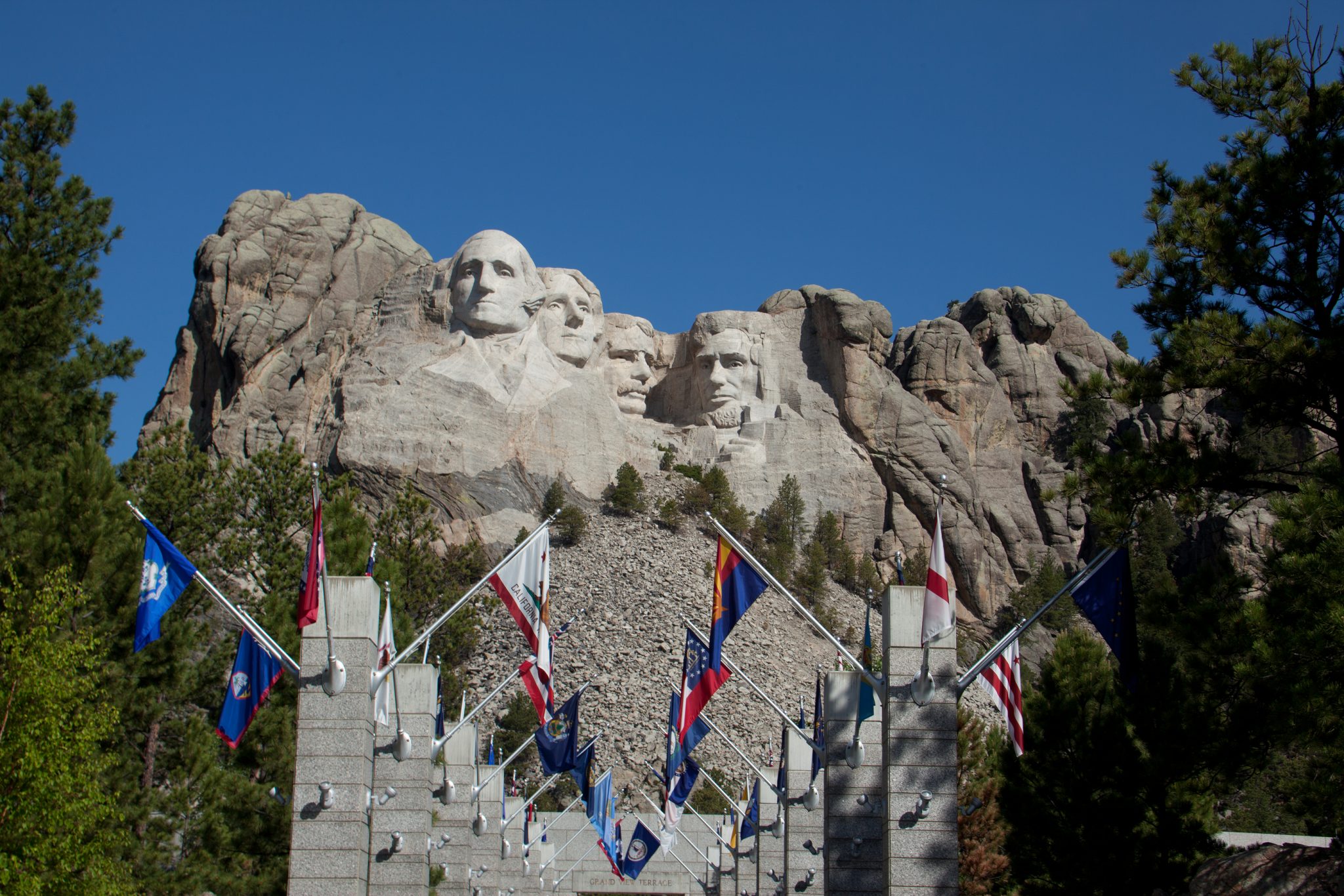 Mount Rushmore National Memorial is your destination. This huge sculpture hewn out of living granite rock depicts four of our most famous presidents, Washington, Lincoln, Jefferson and Teddy Roosevelt, in a pose that seems inevitably right. But it was not always so. Sculptor Gutzon Borglum had to go through an amazing amount of red tape to secure the rights to carve the monument. Begun in 1927 it was completed in October 1941. The setting is ideal, and the visitors’ center is itself a bit of iconic mid century modern architecture. You cannot scamper over the faces, like Cary Grant and Eva Marie Saint in “North by Northwest” but do watch that classic film before you go, and take time to visit the National Parks Service website, to see the array of tours they offer.
Mount Rushmore National Memorial is your destination. This huge sculpture hewn out of living granite rock depicts four of our most famous presidents, Washington, Lincoln, Jefferson and Teddy Roosevelt, in a pose that seems inevitably right. But it was not always so. Sculptor Gutzon Borglum had to go through an amazing amount of red tape to secure the rights to carve the monument. Begun in 1927 it was completed in October 1941. The setting is ideal, and the visitors’ center is itself a bit of iconic mid century modern architecture. You cannot scamper over the faces, like Cary Grant and Eva Marie Saint in “North by Northwest” but do watch that classic film before you go, and take time to visit the National Parks Service website, to see the array of tours they offer.
Travel to and from Mount Rushmore by way of the Iron Mountain Road, 16A, to experience jaw dropping views, cool stone tunnels, pigtail bridges and hairpin turns make this one of the greatest driving routes in the entire USA. Many of the tunnels line up to provide views of the presidents on Mount Rushmore. For a perfect experience, you will want to travel the road in both directions. When you drive south to north, you will come through several tunnels that frame the view of Mt. Rushmore. The beautiful drive provides numerous scenic pull offs; be sure to stop and savor. The tunnels are narrow and work fine for a car but may feel too tight in a big RV. The posted speed limit of 35 mph is intentional, so you can slow down, and enjoy the 17 miles of 314 curves, 14 switchbacks, 3 pigtails, 3 tunnels and 2 road splits. The road is not maintained in winter, so plan with an eye to the season and the weather.
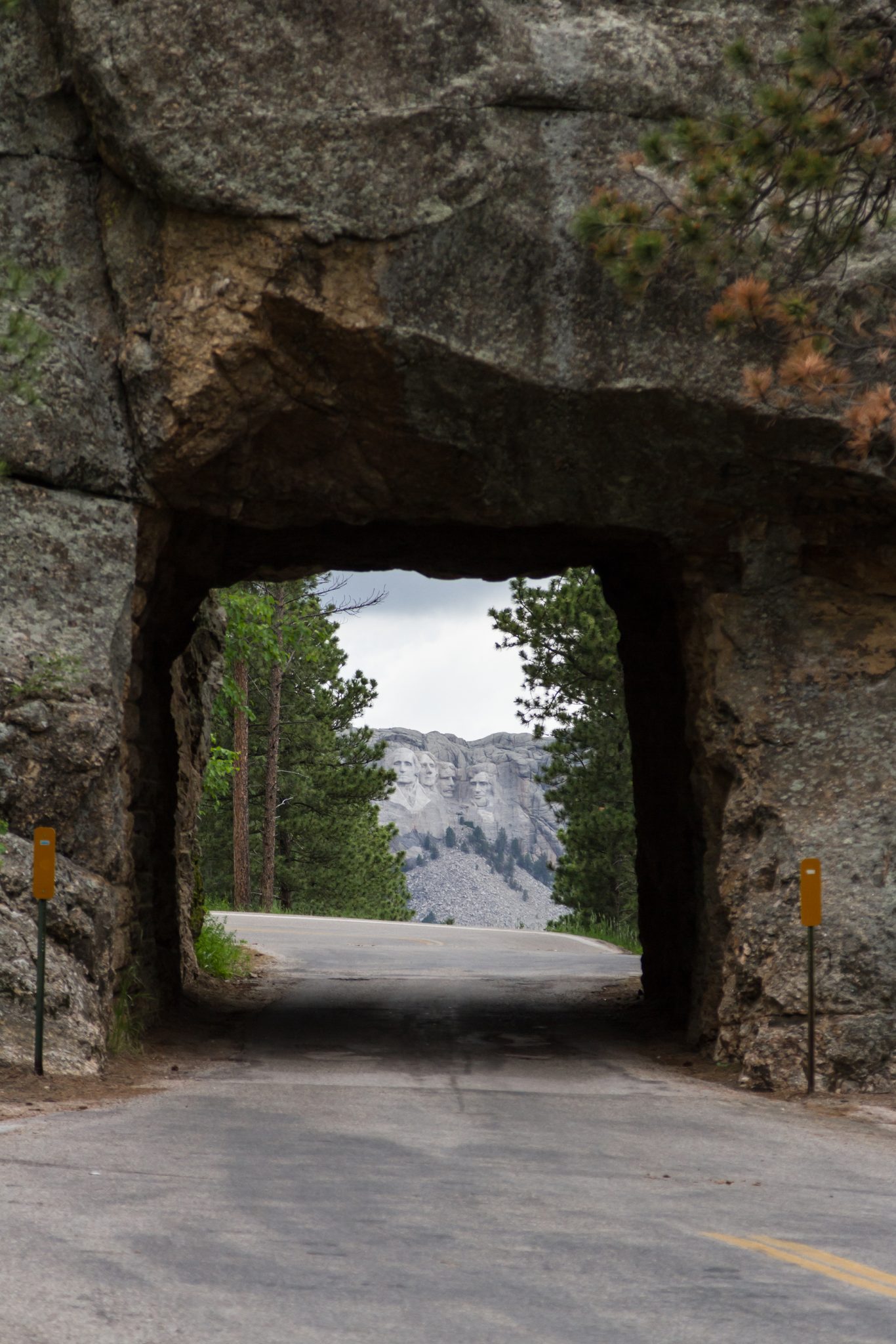 At the other end of the Iron Mountain Road is Custer State Park, where you will probably see pronghorn, white tail deer, bighorn sheep, and some of the 1500 free roaming American bison who call the park home, as you travel the wildlife loop road. The park is also famous for its “begging burros” who expect visitors to share their provisions. So if you want to share, plan ahead with burro pleasing treats, or keep your windows rolled up to keep these very eager diners at bay.
At the other end of the Iron Mountain Road is Custer State Park, where you will probably see pronghorn, white tail deer, bighorn sheep, and some of the 1500 free roaming American bison who call the park home, as you travel the wildlife loop road. The park is also famous for its “begging burros” who expect visitors to share their provisions. So if you want to share, plan ahead with burro pleasing treats, or keep your windows rolled up to keep these very eager diners at bay.
The Crazy Horse Memorial is a work-in-progress oversized sculpture, the world’s largest mountain carving, conceived by Lakota Chief Henry Standing Bear horning the famous Native American leader. Sculptor Korczak Ziolkowski began work in 1947 and has never stopped. Ziolkowski died in 1982. Sixteen years later in 1998, the face of Crazy Horse was completed and dedicated. The sculptor’s late widow Ruth and their children have all been involved in the creation of the memorial. The work is far enough along that you can enjoy some of the roughed in features of the warrior and horse, and get a true idea of the massiveness of this ongoing creative work. While there be sure to see the Indian Museum of North America, and the Native American Cultural Center. Nearby, visit the Black Hills Playhouse in season, and the Black Hills National Forest.
For more driving thrills, be sure to take the Needles Highway SD 87, with iconic views of the towering stone needles and the tight squeeze through its narrowest passage. Between this road and the Iron Mountain Road, you are sure to tick all the boxes for true driving thrills, as you drive the nation.

